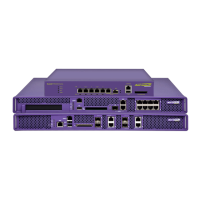Summit WM3000 Series Controller System Reference Guide 469
To review the current panic snapshots on the controller:
1 Select Diagnostics > Panic Snapshots from the main menu.
2 Refer to the following table headings within the Panic Snapshots screen:
3 Refer to the Preview field for panic information in ASCII text. When a panic file is selected, the
corresponding text is displayed in the preview screen and the name of the file displays. Use this
information as a high-level overview of the panic.
4 Select a target panic file and click the Delete button to remove the file.
5 Select a target panic file and click the View button to open a separate viewing screen to display the
panic information in greater detail. For more information, see “Viewing Panic Details” on page 470.
6 Click the Tr ansfe r F il es button to open the transfer dialogue to transfer the file to another location. For
more information, see “Transferring Panic Files” on page 470.
Name
Displays the title of the panic file. Panic files are named n.panic where n
is in the range 0-9. 0 is always the oldest saved panic file and the
highest number is the most recent. If the system experiences a panic,
there are ten existing panics, the oldest is deleted and the remaining nine
are renamed so the newest can be saved as 9.
Size
Displays the size of the panic file in bytes.
Created
Displays the date and time the panic file was created. The panic file is
created after the system reboots, however the panic information within
the file contains the date and time the panic actually occurred.

